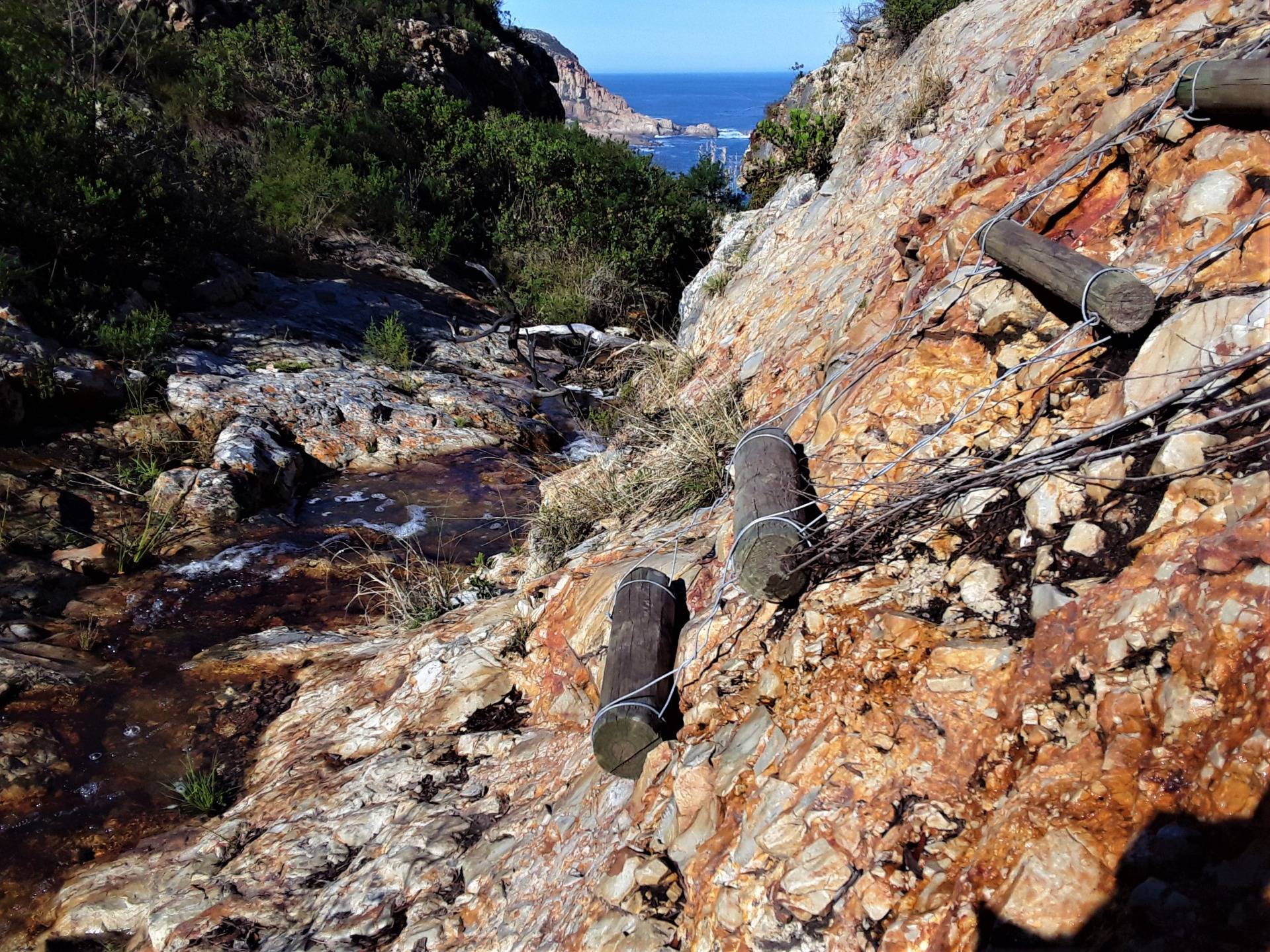Today I want to show you the final destination of the river on my hiking trail, where it ends its journey at the Indian Ocean, here on the southernmost shores of Africa. This long stretch of rugged and rocky coastline is empty of inhabitants or any visitors so I get to explore it at my leisure. I’ve shown you the higher region of the rain fed stream as it cascades down the cliffs and through pools of paradise, as I like to call them. Today I want to show the very last stretch of that same stream so that you get the full picture.
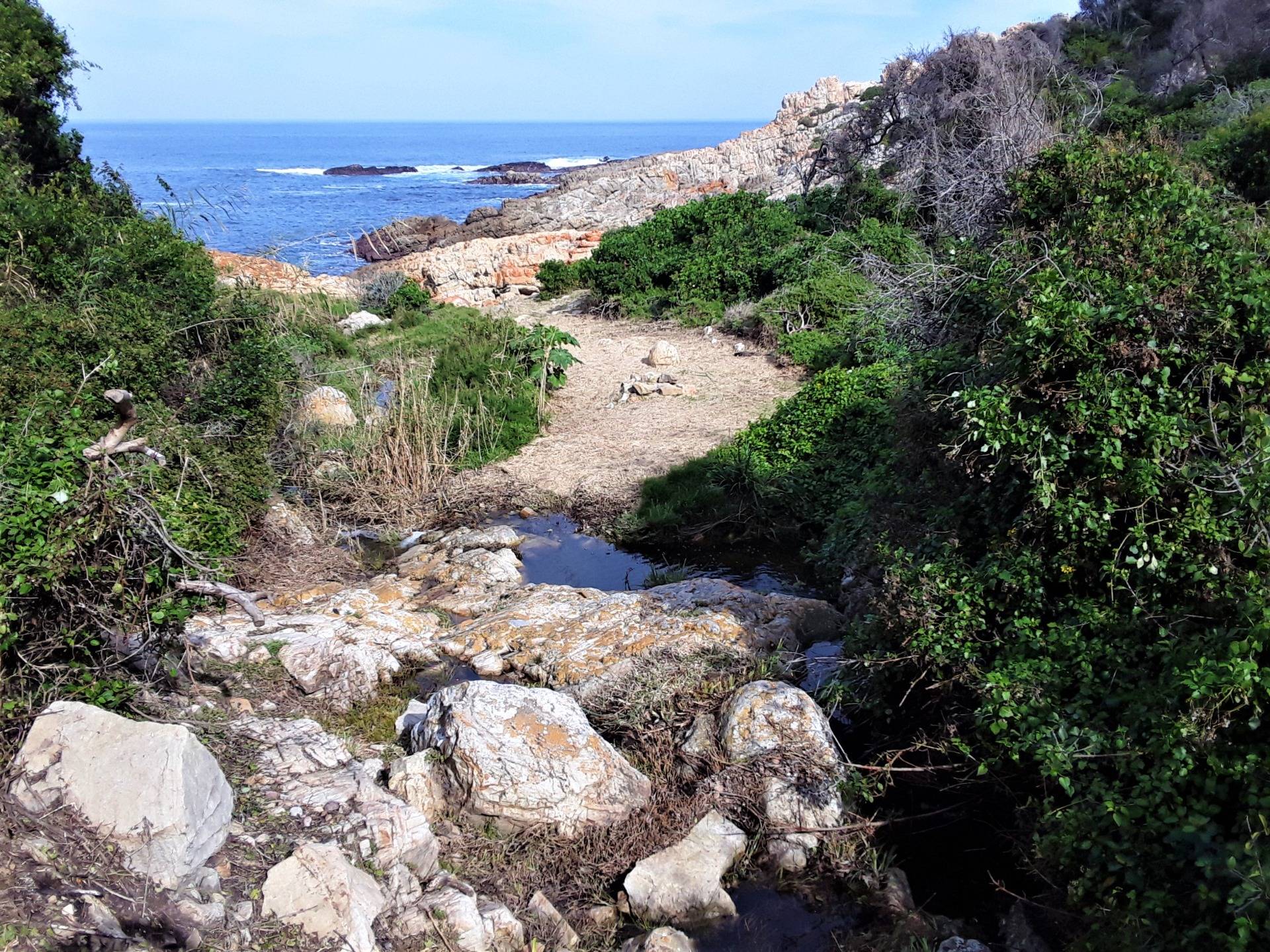
In the photo below you can see where I climb down a nice handmade ladder that has been placed there by the protectors of the environment and ecology along these shores. This is a protected area and marine reserve, along this part of the Cape coastline, and it holds some endangered species of indigenous plants from the “Fynbos” floral kingdom. The ladder brings me from the path that began higher up on the cliff top and hillside, down to this particular ravine, where the stream flows. To the left is a higher waterfall and to the right – towards the sea – is the last waterfall over the edge of the next cliff down to the sea level below. From here I climb down a path that has been created by the conservationist team that oversees this stretch of the hiking trail.
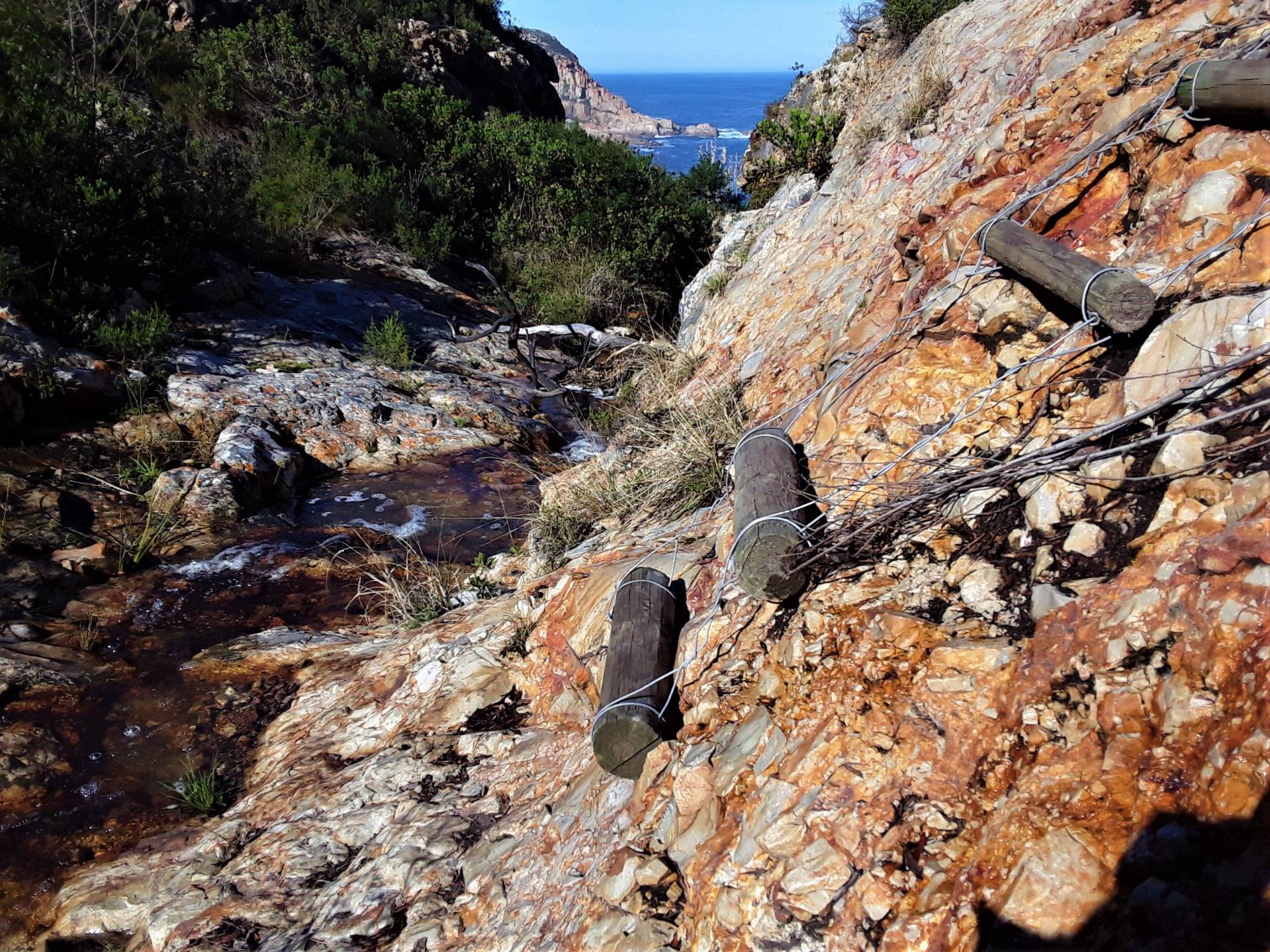
On the way down the last leg of the trail to the sea shore, I have to pass under some fallen trees. These are more classic examples of the “upside down trees” as I like to call them. They have fallen over from the effects of gravity while growing on this steep slope, and lie with their trunks below their roots. Yet some of their roots remain in the soil and so they still live and continue to grow. The path has been cleared by the conservationist team, although the tree has been left to continue growing, it seems.
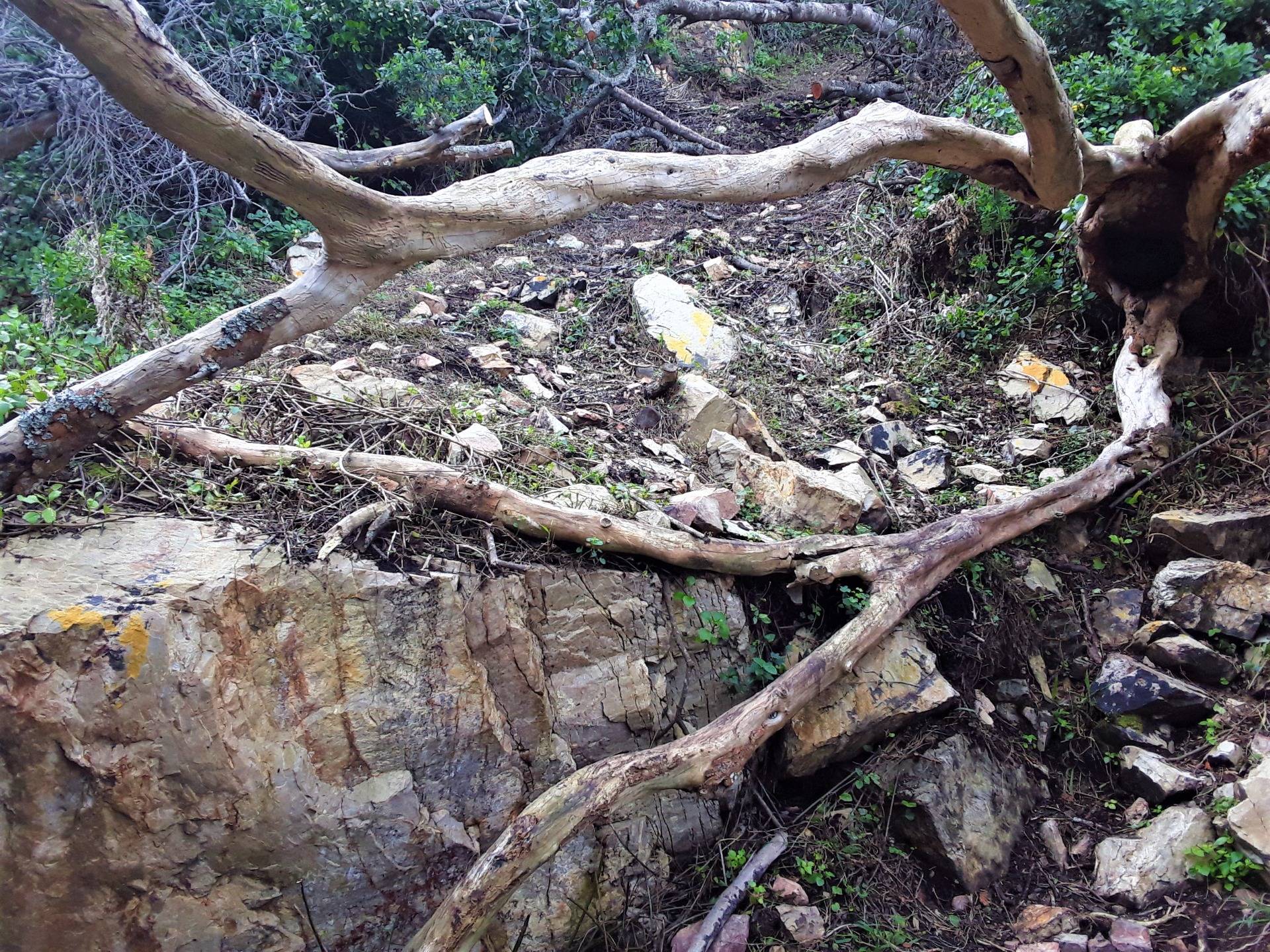
In the photo below you can see a close-up view of the upturned roots of the fallen tree, with the trunk lying in a downward sloping direction at the bottom of the image to the left. Some of the roots are still in the ground so the tree somehow survives. Just behind the roots, in the center background of the image, you can see the actual little waterfall, if you look carefully. That’s the final drop from the last level up the cliff side down to the sea level.
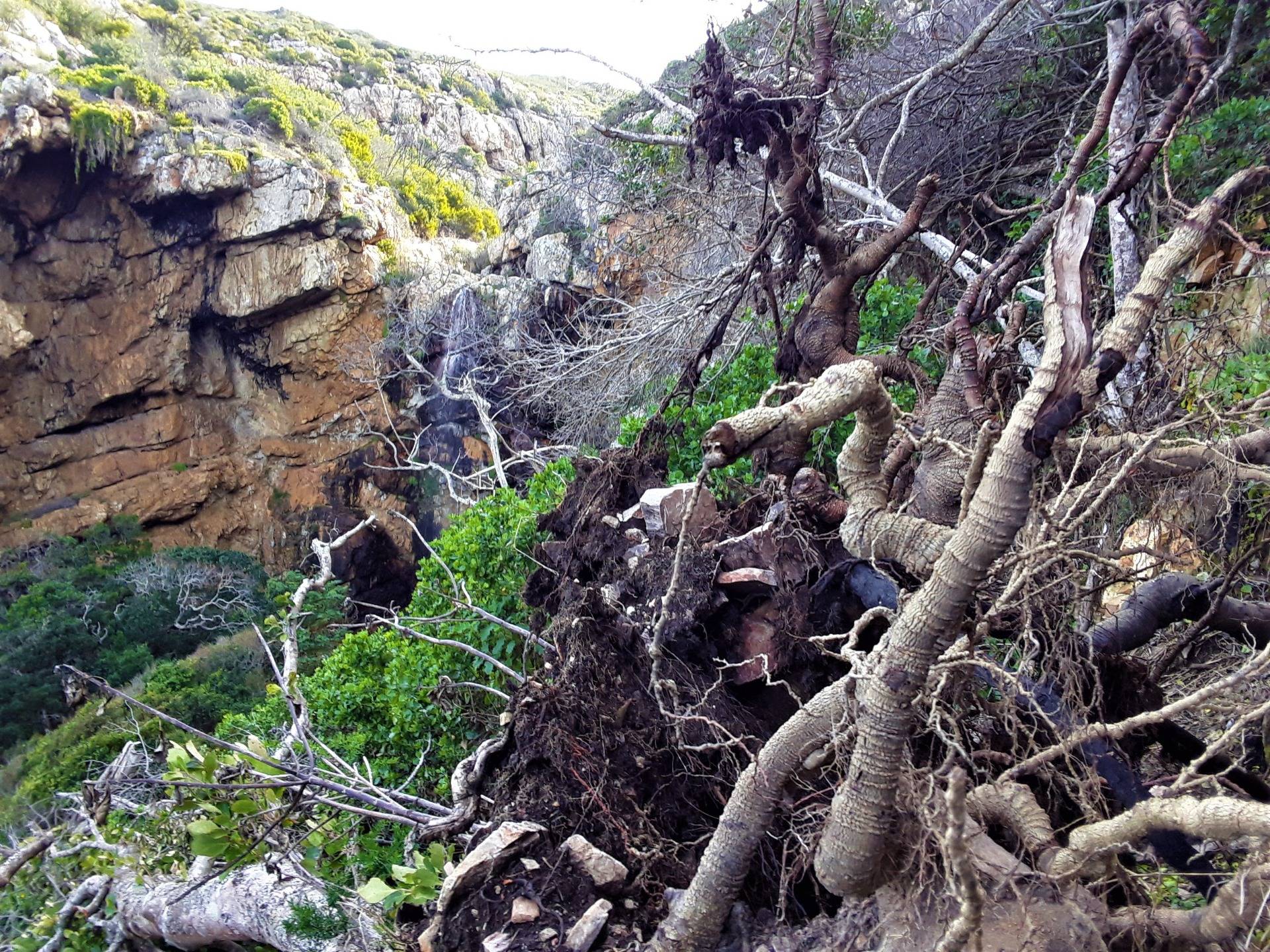
Just below the previous recently fallen tree is another much older skeleton of a fallen tree that has always been there since I began exploring this trail a few years ago. It forms an arch under which I have to climb as I make my way down the rough path toward the shoreline. There I can catch up with the final stretch of the stream as it meanders to the edge of the African continent and overflows into the vast reservoir of the Indian ocean way down south.
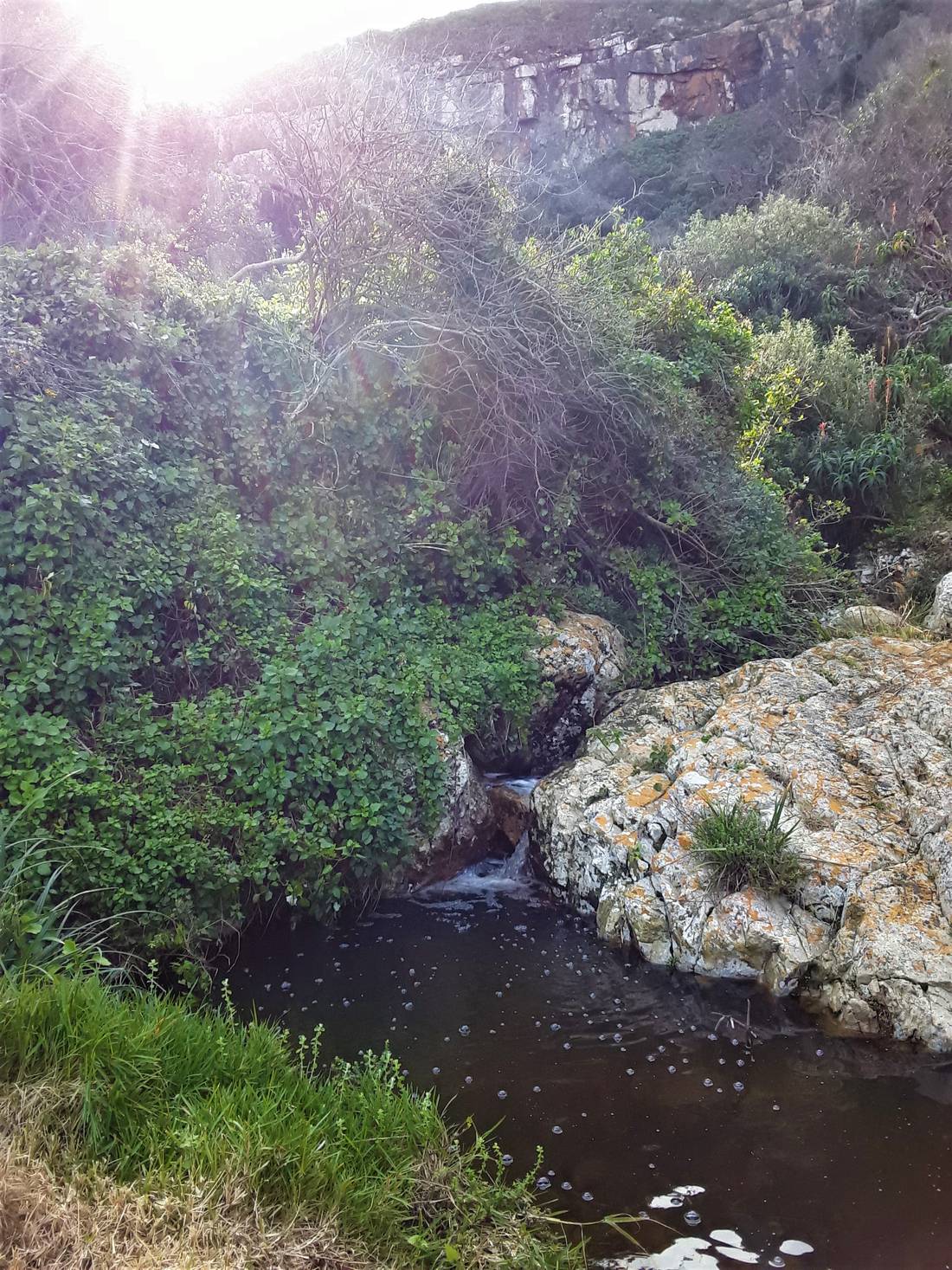
Once the stream has poured over the edge of the last cliff in a cascading waterfall, it meanders the final few hundred meters toward the ocean that awaits all rivers as their final resting place. The fresh rain water has not traveled far to get here, since it collected just up on the cliff tops around a kilometer away. It’s a very localized occasional stream that only flows after sufficient rain. So I was fortunate to to see it in full flow and observe its behavior.
Don't Forget: Get Travel Health Insurance!
To make your trip a worry-free experience, TravelFeed recommends SafetyWing Nomad Insurance. It provides comprehensive health coverage while you travel, so you can focus on exploring, not the unexpected. Get a quote here

Once it reaches the shoreline it seems to collect in another rocky pool, where the ground is just above sea level now and very flattened out. All sorts of curious “Fynbos” indigenous ground cover vegetation grows right up to the shoreline here. Some of them are rare endangered species that you will only find in certain little bays or alcoves along this coastline. They really look prehistoric and it appears as if little human encroachment has occurred here since the dawn of creation, giving the place a timeless feel.
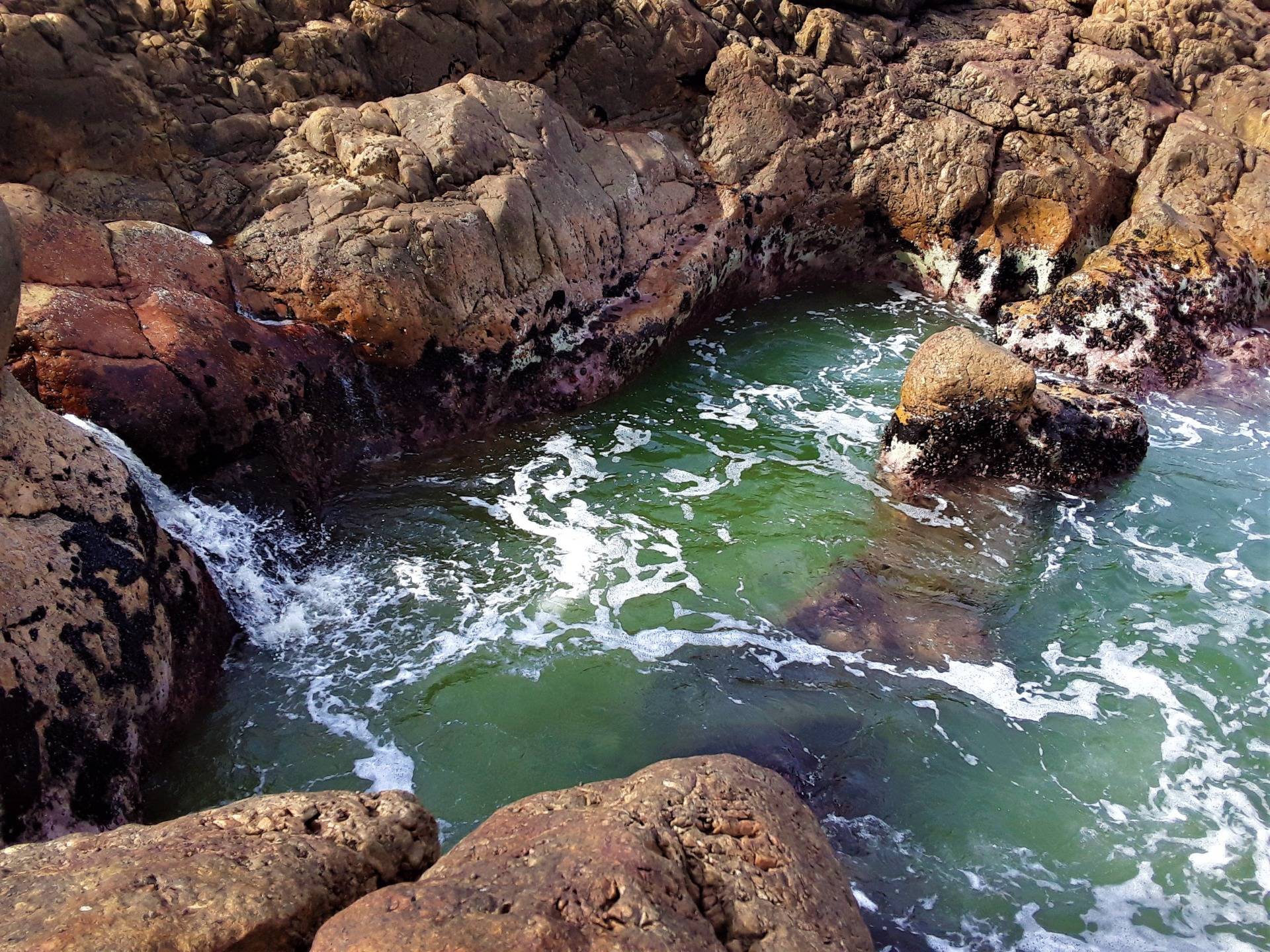
Finally the fresh rain water flows directly into the Indian Ocean, as you can see in the photo above. On the left of the image you can see the little channel that must have been carved over thousands of years already, where the water pours into the sea. It’s such a beautiful sight to observe the little river in its full flow like this, for just a brief moment in time after the rains. Here the sense of abundance is palpable.
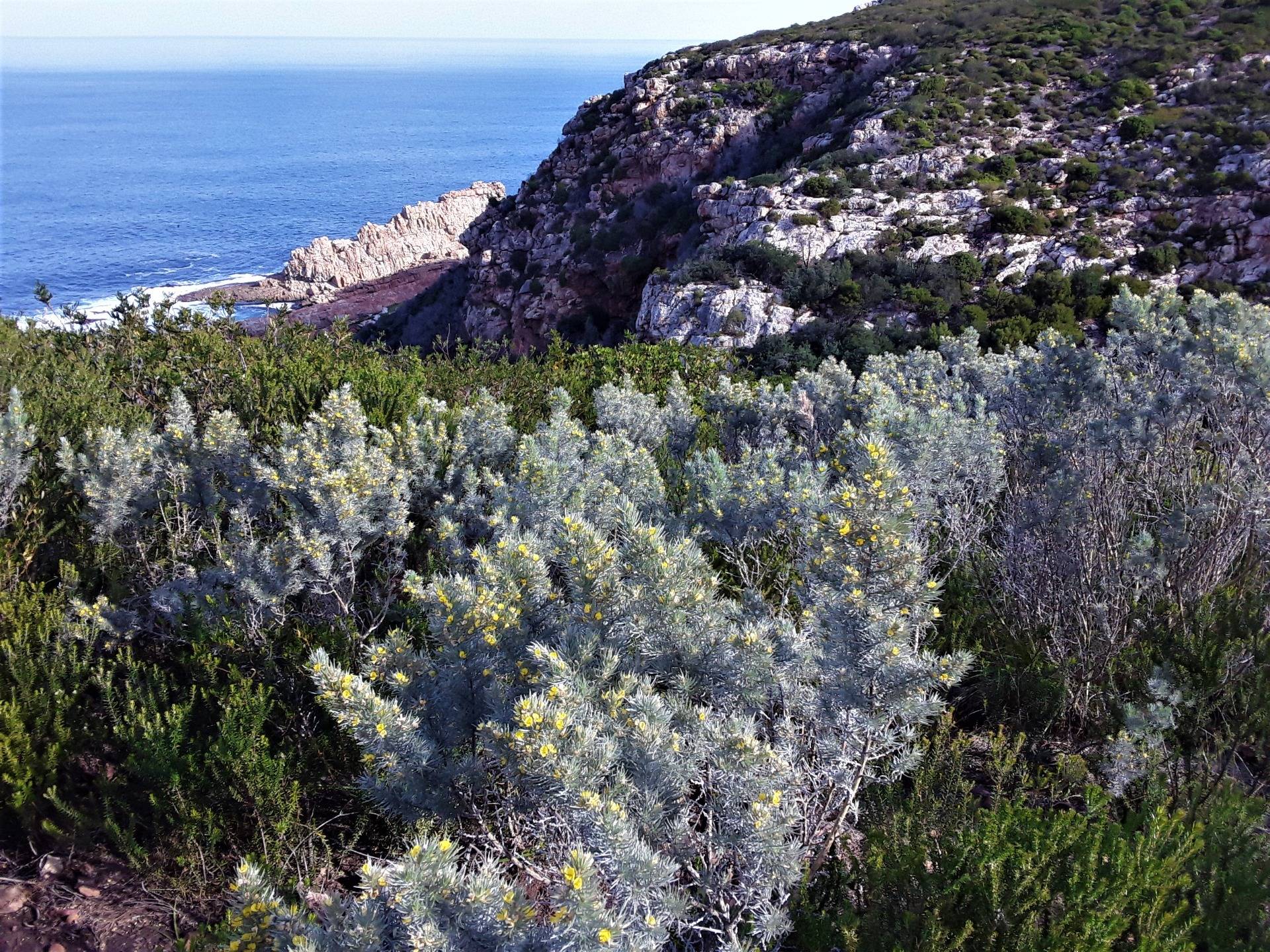
One could easily live here for days or months, camping out under the stars or in one of the caves that I come across occasionally, while collecting rain water to wash and drink, and making fires with the abundant wood. However, people are not allowed to camp freely on these shores, and only certain areas can be used with a permit from the environmentalist oversight department. Nevertheless, I continue my day hikes throughout the year.
(photos my own)
Travel Resources for your trip to South Africa
Recommended by TravelFeed
Flights: We recommend checking Kiwi.com to find the best and cheapest flights to South Africa.
Accomodation: Explore the best places to stay in South Africa on Booking.com, Agoda and Hostelworld.
Travel Insurance: Medical emergencies abroad can be pricey, but travel health insurance is not. We always use SafetyWing for affordable and reliable coverage.
Car Rental: For hassle-free car hiring, DiscoverCars is our trusted choice with a wide selection of vehicles.
Internet: Got an eSIM compatible phone? Airalo is perfect for reliable internet access during your trip. Just install it before you go, and you're set!
Day Trips & Tours: We recommend GetYourGuide for a variety of well-organized and enjoyable activities.
Travel Planner: Need a hand planning? Our free travel planner chatbot is your personal guide to South Africa. Chat now.
Disclosure: Posts on TravelFeed may contain affiliate links. See affiliate disclosure.
